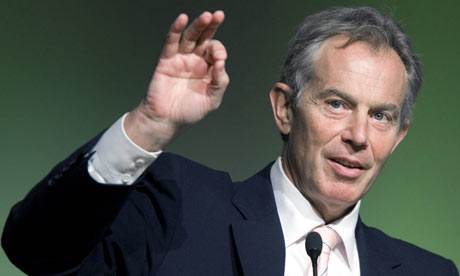We all like to feel special, unique and, at times, superior. It doesn’t mean we are insular, evil or bonkers. It doesn’t mean you need to meet with your shrink Dr. Quaalude four rather two times a week. It means we are flawed, insecure, competitive and desperate for the Universe to acknowledge, and somehow validate, each one of us.
Narcissist. Narcissism. Narcissistic. These have been hot labels in the past few years. Lots of articles and pop psychology pieces in which writers bandy these terms around. There’s been some name-calling, too. Boomers and Millennials are called narcissistic. So are certain bosses, public figures, artists, entertainers.
To name a few famous people who’ve been so accused: Pablo Picasso, Eva Peron, Warren Beatty, Sharon Stone, Charlie Chaplin, Margaret Thatcher, Christian Barnard, Donald Trump and William Shatner. Even Elvis. Then there are legions of more obscure folks who we see as uber-selfish, unfeeling, too full of confidence, grandiose. And a few who just make us feel uncomfortable or we just don’t like.
What going on here? Is Narcissism the new Cooties, the dreaded but fictional disease you got from opposite sex classmates on the playground? If it is, let’s find some other way to trash people. Let’s trade in the entire narcissism lexicon for something that’s fairer and we can all understand.
Because we are in over our heads, folks.
In conversation and writing, lots of non-experts–I am not an expert on this, are you?–employ the narcissism lexicon glibly and confidently to describe all kinds of bad behavior as if everyone knows exactly what they mean. One problem with this is that nearly everyone who does it (like Tony Blair’s talented friend in the article linked to below) seems to have no idea what they’re talking about. Even worse, people who use the terminology often lump everyone with narcissistic traits together without making distinctions between “healthy” narcissists, garden variety egotists and deeply malfunctioning humans.
Not making those distinctions is not just silly, sad, ignorant and irresponsible. Given the powerful stigma narcissism carries with some people who are just as clueless, it’s a dangerous assessment.

Retired Alpha male pol having fun. Narcissist? (Adrian Wyld/AP)
You may think, as I do, that the American Psychiatric Association (APA) and other mental health authorities–which at this point have made almost every activity, eccentricity and wondrous human foible a “disorder” or condition which requires, or will soon require, professional treatment–went slightly batshit itself years ago. My favorite is the relatively recent addition to the Diagnostic and Statistical Manual of Mental Disorders (DSM) of caffeinism. There are five (5) types of caffeinism. One is Caffeine Withdrawal, which for a few years now has been a mental disorder. I expect to see jetlag very soon.
However, the APA and these other bodies continue to have the power to flag and define sickness and disorders. The power to define mental illness in our society is the power to suggest what is moral, immoral, good, bad, acceptable, unacceptable. With respect to medical expertise especially, we are at heart compliant and conformist. We remain happy to let others do the thinking for us.
And narcissists in the public mind are very bad. In addition to the usual suspects noted above, some of the worst villains and head cases in human history make the famous/infamous people list: Stalin, Hitler, Lee Harvey Oswald, Ted Bundy, Joseph Mengele, O.J. Simpson, Jim Jones, Ike Turner and, last but not least, Simon Cowell.
Although I will never be an expert on anything scientific, I did do some homework. Apparently, we should think of narcissists in three groups. The first group includes each human being who has ever lived. We all have a touch of narcissism–and we need it to survive. It’s healthy.
The second group is actual narcissists. These are people who score high on tests based on traits (symptoms) listed in the DSM. Think politicians, many execs and entrepreneurs, 1980s-era bond traders, actors, writers, surgeons, go-getters, workaholics, a good chunk of the freshman class at Dartmouth College, all AUSAs and nearly every effective trial lawyer you will ever meet. You get the idea.*
The third group is comprised of those with a clinical diagnosis of Narcissistic Personality Disorder (NPD). These are the few, the miserable, the hardcore. See my listing in the paragraph above. It’s the same kind of folks–but now, according to the psychiatric community, they’re stuck in the wild blue yonder, and can’t get out. Their selfishness and self-absorption prevent them from ever having a meaningful relationship with another human being.
The traits for this group: (1) expectation to be recognized as superior and special, without superior accomplishments, (2) expectation of constant attention, admiration and positive reinforcement from others, (3) envy of others and believes others envy him/her, (4) preoccupation with thoughts and fantasies of great success, enormous attractiveness, power, intelligence, (4) lacks the ability to empathize with the feelings or desires of others, (5) arrogant in attitudes and behavior and (6) expectation of special treatment that are unrealistic.
The problem? On any given day, the above traits/symptoms for NPD describe most of your “enemies”, and certainly every one of the insane, miserable and unreasonable opposing counsel you are putting up with. It’s the candidate you are running against. It’s the woman who just dumped you.
In my reading, lack of empathy stands out as a key trait shared by at least those in the second and third groups. To be honest, in my life I’ve met no one with zero or little empathy. However, lots of people I know seem to have trouble, at least initially, of “feeling the pain” of others. Most of them are men. I doubt that anyone who has read this far considers empathy to be a male trait. It’s clearly not. So are most men narcissists?

The Narcissus, Karl Bryullov, Russian, 1819
